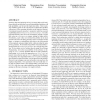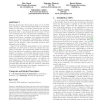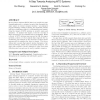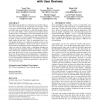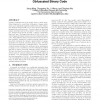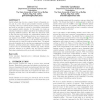CCS
2015
ACM
8 years 2 months ago
2015
ACM
Syntactic data anonymization strives to (i) ensure that an adversary cannot identify an individual’s record from published attributes with high probability, and (ii) provide hig...
CCS
2015
ACM
8 years 2 months ago
2015
ACM
Although studies have shown that at least one in ten Web pages contains a client-side XSS vulnerability, the prevalent causes for this class of Cross-Site Scripting have not been ...
CCS
2015
ACM
8 years 2 months ago
2015
ACM
Moving Target Defenses (MTD) have been touted as a game changing approach to computer security that eliminates the static nature of current computer systems – an attacker’s bi...
CCS
2015
ACM
8 years 2 months ago
2015
ACM
Smartphone app updates are critical to user security and privacy. New versions may fix important security bugs, which is why users should usually update their apps. However, occas...
CCS
2015
ACM
8 years 2 months ago
2015
ACM
Code-reuse attacks continue to evolve and remain a severe threat to modern software. Recent research has proposed a variety of defenses with differing security, efficiency, and p...
CCS
2015
ACM
8 years 2 months ago
2015
ACM
Censorship-circumvention systems are designed to help users bypass Internet censorship. As more sophisticated deep-packetinspection (DPI) mechanisms have been deployed by censors ...
CCS
2015
ACM
8 years 2 months ago
2015
ACM
Opaque predicates have been widely used to insert superfluous branches for control flow obfuscation. Opaque predicates can be seamlessly applied together with other obfuscation ...
CCS
2015
ACM
8 years 2 months ago
2015
ACM
Insider attack has become a major threat in financial sector and is a very serious and pervasive security problem. Currently, there is no insider threat ontology in this domain a...
CCS
2015
ACM
8 years 2 months ago
2015
ACM
One rising trend in today’s consumer electronics is the wearable devices, e.g., smartwatches. With tens of millions of smartwatches shipped, however, the security implications o...
CCS
2015
ACM
8 years 2 months ago
2015
ACM
Whitelisting has become a common practice to ensure execution of trusted application code. However, its effectiveness in protecting client-side web application code has not yet be...
